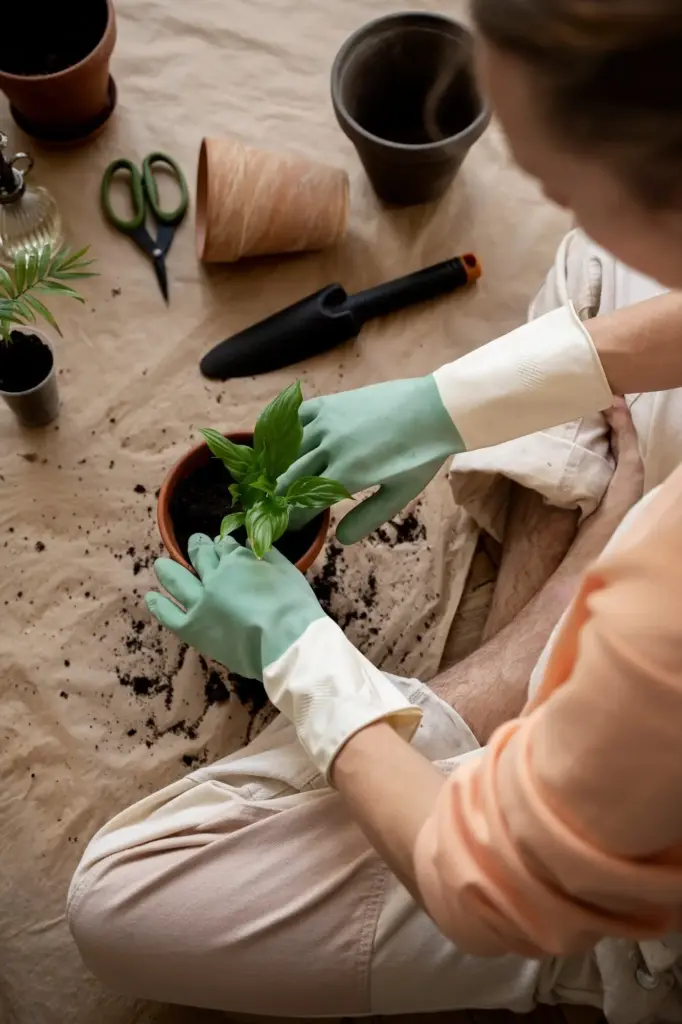Guardians of the Garden: Organic Ways to Outsmart Pests and Disease


Healthy Soil, Resilient Plants

Compost as a Living Shield
Well-finished compost inoculates beds with beneficial microbes that occupy niches pathogens crave, improving structure, drainage, and nutrient buffering. A steady trickle of nutrition avoids flushes that invite aphids, while humus binds moisture so plants experience fewer drought pulses that weaken tissues and open doors to opportunists.
Mulch for Moisture, Weeds, and Splash Protection
Well-finished compost inoculates beds with beneficial microbes that occupy niches pathogens crave, improving structure, drainage, and nutrient buffering. A steady trickle of nutrition avoids flushes that invite aphids, while humus binds moisture so plants experience fewer drought pulses that weaken tissues and open doors to opportunists.
Feed for Balance, Not Excess
Well-finished compost inoculates beds with beneficial microbes that occupy niches pathogens crave, improving structure, drainage, and nutrient buffering. A steady trickle of nutrition avoids flushes that invite aphids, while humus binds moisture so plants experience fewer drought pulses that weaken tissues and open doors to opportunists.

Right Plant, Right Place
Select cultivars bred for resistance to common local diseases, match sun needs precisely, and respect your microclimates. A tomato craves heat and airflow; leafy greens appreciate cooler corners. Aligning innate preferences reduces stress hormones, leaving fewer chemical signals that broadcast vulnerability to insects and opportunistic fungi.
Rotation and Polyculture Patterns
Move plant families yearly so soilborne pests and pathogens miss their favorite hosts. Layer heights and bloom times with flowers and herbs to attract predators and parasitoids. Mixed scents and textures scramble cues for moths and beetles, lowering damage while keeping harvests diverse and resilient across seasons.
Water with Intention
Irrigate at the base in the morning using drip lines or soaker hoses, keeping foliage dry and giving leaves time to breathe before nightfall. Consistent moisture avoids cracking and splitting that invite rot, while careful scheduling denies fungus gnats and mosquitoes the stagnant conditions they love.


Scout, Identify, Decide
Invite Predators and Parasitoids
Harness Microbial Helpers
Simple Barriers and Exclusion
Low-Impact Remedies That Fit the Ecosystem
Soaps, Oils, and Kaolin Clay
Insecticidal soaps dissolve soft-bodied pests’ protective coatings; horticultural oils smother eggs and mites; kaolin clay forms a reflective film that confuses chewing insects. Target coverage, avoid open blooms, and repeat as labels direct, especially after rain, to maintain protection without harming allies resting nearby.
Botanical and Microbial Options
Neem formulations disrupt feeding and growth for many sap suckers; spinosad, derived from soil bacteria, targets certain thrips and caterpillars with caution for bees. Copper and sulfur protect against specific diseases when timed correctly. Use sparingly, rotate modes, and monitor closely for results and rebound.
Application Craft and Weather Windows
Calm, cool evenings reduce evaporation and drift, improving contact while safeguarding pollinators. Mix only what you need, strain solutions to prevent clogs, and calibrate sprayers. Rainfast periods matter; wind speeds matter more. Protect skin and lungs, and wash tools to keep residues from compounding unintentionally.

Focused Disease Defense
Reading the Weather and the Leaf
Powdery mildew favors warm days with cool nights; downy mildew loves prolonged leaf wetness and shadows. Notice the pattern of spots and the direction they spread. Adjust irrigation and spacing promptly, and deploy biopreventatives early when forecasts align with your garden’s most vulnerable windows.
Sanitation That Matters
Clear diseased leaves immediately, bagging rather than composting if your pile does not reach hot temperatures. Disinfect stakes and ties between seasons. Avoid working wet foliage to prevent smearing spores. A tidy bed interrupts lifecycles quietly, saving future time, plants, and frustration without any flashy inputs.
Genetics, Grafting, and Diversity
Choose cultivars labeled for resistance to blight, wilt, or mosaic viruses where prevalent. Consider grafted tomatoes or cucurbits when soils harbor persistent foes. Plant multiple varieties and stagger planting dates so a single vulnerability never defines the season, protecting both yields and your gardening confidence.
A Tomato Patch Turnaround

Keep a Simple Garden Log

Join the Conversation
